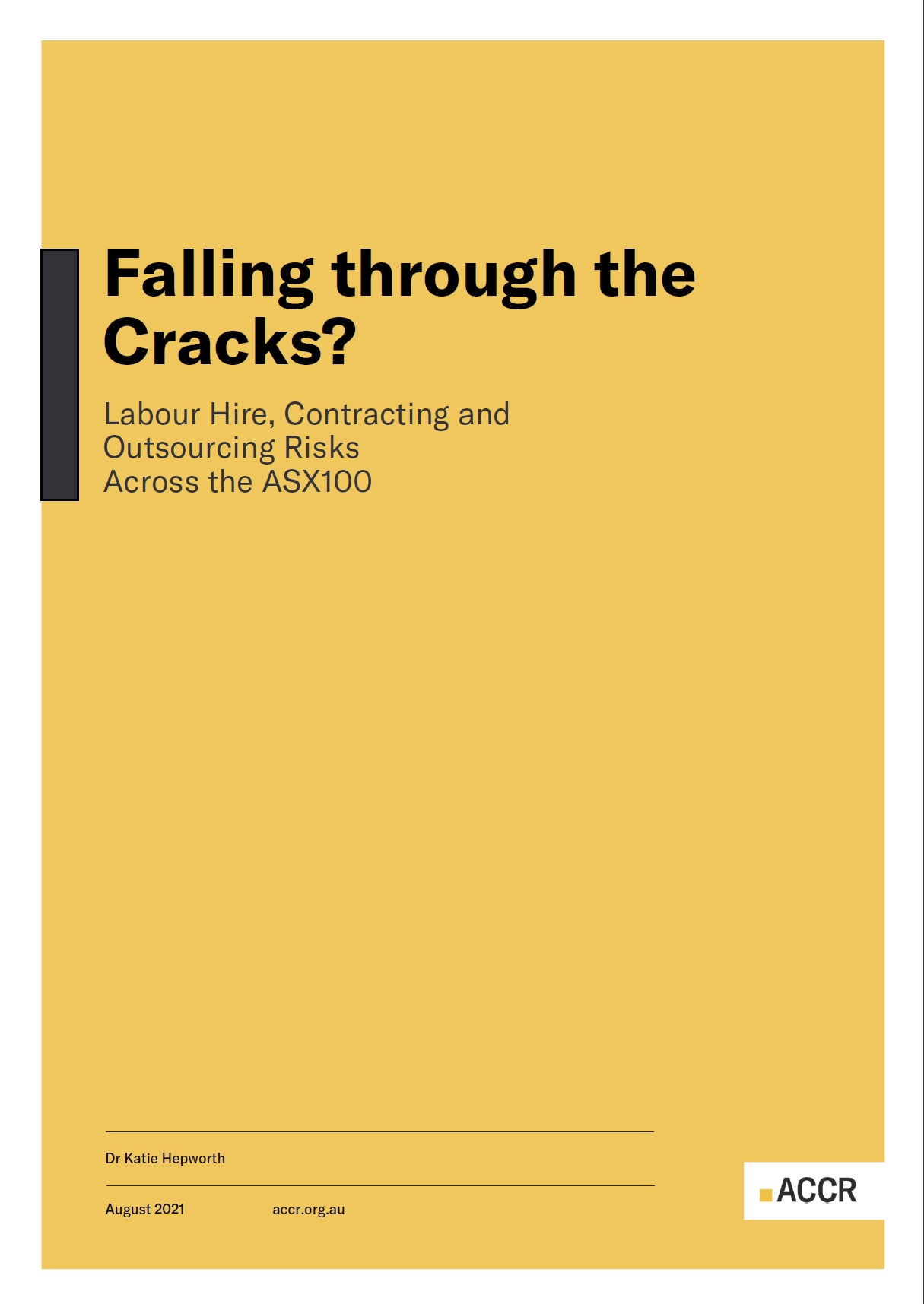Publication Falling through the Cracks? Labour hire, Contracting and Outsourcing Risks across the ASX100: Methodology
Methodology
In 2020, ACCR published a major research report, Labour Hire and Contracting Across the ASX100, exploring some of the key workforce and operational risks associated with indirect employment. Risks were identified via a desktop analysis of state and federal government inquiries[1] covering labour hire matters over the last five years, and an academic literature review on the use of labour hire in Australia. Additional information was then gathered from media reports, statements by the Fair Work Ombudsman, court documents, and enterprise agreements.
That report reviewed the reporting of ASX100 companies in four key sectors: mining, construction, commercial cleaning and large-scale solar installation. These sectors were chosen because they demonstrated high rates of labour hire, significant non-compliance by labour hire providers with employment and other legislation, and/or due to the severity of risks in the sector.
This report updates and extends that analysis. It considers how companies in airlines and airports, casinos, construction, mining, oil and gas exploration, property management, retail, utilities, supermarkets, and warehousing are reporting on their indirect workforces, and summarises some of the risks and challenges associated with workforce models which rely on large indirect workforces.
Additional sectors were chosen following a review of traditional media, company reporting, information from safety regulators, and government inquiries for the period 1 April 2020–30 June 2021, to identify areas where the use of indirect employment was linked to specific allegations, controversies and/or increased business risk. See p. 9–10 for specific case studies of a range of these risks.
Companies within those sectors were identified via their S&P primary industry codes (see Appendix 1). The ASX100 list was current as of 16 February 2021.
A number of high-risk sectors are not included in our analysis, as there are no ASX100 host companies operating in these sectors. These include horticulture and meat processing.
ACCR reviewed relevant company documents – including Annual Reports, Sustainability Reports, Corporate Governance statements or appendixes, and/or ESG Analyst toolkits. Company documents were reviewed for the fiscal year ending 30 June 2020 or the calendar year ending 31 December 2020, depending on a company’s reporting cycle.
The cut-off date for information to be included in our analysis was 31 December 2020.
Case studies have been used to illustrate labour hire related risks in each sector. Case study information was prepared by reviewing government inquiries, media reportage, and materials from corporate regulatory bodies.
In preparing this report, ACCR also consulted with companies, unions, investors, and government agencies.
Since 2015, several state and federal government inquiries have examined the dynamics of labour hire and other third party contracting arrangements in Australia, or discussed labour hire as a dimension of other industrial relations matters, such as wage theft. These inquiries include: Inquiry into the Labour Hire Industry and Insecure Work, Victoria (2015–2016); Inquiry into the Practices of the Labour Hire Industry in Queensland (2015–2016); Black Economy Taskforce (2016–2017); Corporate Avoidance of the Fair Work Act (2016–2017); Inquiry into the Extent, Nature and Consequence of Insecure Work in the ACT (2017); Select Committee on the Future of Work and Workers (2017–2018); Inquiry into Wage Theft in Queensland (2018); Migrant Workers’ Taskforce (2016–2019). ↩︎
